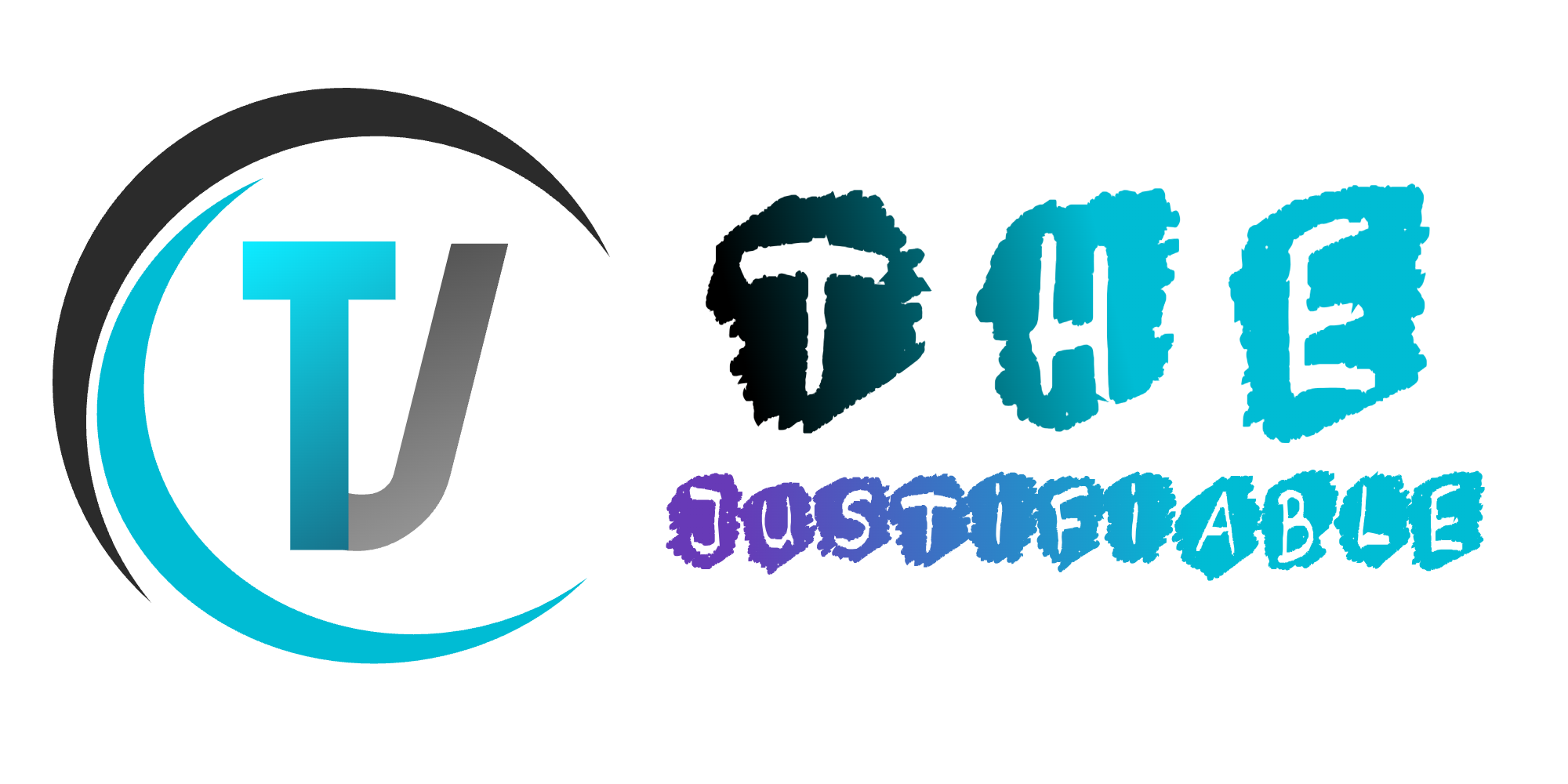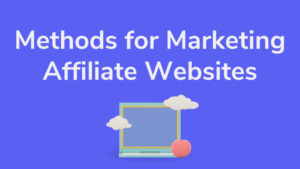Table of Contents
What does it really take to build an affiliate marketing strategy that actually works? How do you move beyond random links and start generating real, consistent income? If you’ve been wondering how to grow your affiliate earnings without feeling stuck or overwhelmed, you’re in the right place.
An affiliate marketing strategy isn’t just about choosing a few products and hoping for clicks—it’s about creating a plan that connects with your audience, builds trust, and drives conversions. In this guide, we’ll walk through clear steps to help you build a strategy that fits your goals, your niche, and your unique strengths. Let’s break it all down and set you up for success today.
Define Clear Goals to Guide Your Affiliate Marketing Strategy
Before jumping into promotions or joining affiliate programs, you need to know exactly what you’re aiming for. Setting clear goals gives your affiliate marketing strategy purpose and direction—it turns random actions into a focused, revenue-generating system.
Identify Revenue Targets and Milestones
Let’s start with a simple but powerful question: How much do you want to earn from affiliate marketing—and by when? Your answer will shape every step of your strategy.
Whether your goal is to earn an extra $500 a month or to replace a full-time income, defining specific revenue targets makes the entire process more measurable. This isn’t just about ambition; it’s about breaking down your path into realistic milestones. For example:
- Month 1–3: $100/month from blog posts and social media.
- Month 4–6: $500/month from SEO traffic and email marketing.
- Month 7–12: $1,000+/month with diversified content and platforms.
By setting incremental goals, you not only stay motivated—you also give yourself room to test, learn, and grow.
Choose Between Passive Income or Full-Time Business Goals
Another major decision: are you looking for a side hustle that earns while you sleep, or are you building a serious business that can scale?
A passive income approach may prioritize evergreen content like SEO-optimized blog posts and automated email funnels. A full-time business model might involve building a team, creating product funnels, and constantly optimizing for conversions.
Here’s how the goals might differ:
- Passive income focus: Minimal maintenance, evergreen traffic, automation tools.
- Full-time business: Active scaling, traffic growth, collaborations, content volume.
It’s important to be honest with yourself about how much time, effort, and investment you’re ready to commit. That clarity helps you choose the right tactics and avoid burnout.
Clarify Your Audience’s Pain Points and Desires
You can’t sell what your audience doesn’t want—or worse, doesn’t understand. That’s why defining goals also means understanding your audience’s challenges and motivations.
Try asking:
- What are they struggling with that I can help solve?
- What solutions do they already search for?
- What tools or products might improve their lives?
For instance, if your niche is productivity for busy entrepreneurs, your affiliate content might center around time-saving tools, AI software, or automation platforms. By addressing those pain points head-on, your affiliate strategy becomes both relevant and valuable.
Use forums, Reddit threads, social media comments, and even competitor blogs to collect this insight. Create a simple list of recurring struggles or questions, and let that guide your product recommendations.
Set Short-Term vs. Long-Term Affiliate Objectives
Short-term goals keep you moving. Long-term goals keep you grounded. You need both.
Short-term affiliate objectives might include:
- Publishing 5 SEO-optimized blog posts in 30 days.
- Setting up your first email autoresponder with affiliate links.
- Reaching 100 subscribers on your niche YouTube channel.
Long-term objectives could look like:
- Ranking on the first page of Google for 5+ money keywords.
- Building a list of 5,000+ engaged email subscribers.
- Replacing your 9–5 income with affiliate revenue.
This combination of goals makes your affiliate marketing strategy flexible. You stay focused on immediate actions while building a system that keeps working long after you’ve moved on to new projects.
Choose the Right Affiliate Programs That Align With Your Niche

Choosing the wrong program can sabotage your efforts, no matter how great your content is. The most effective affiliate marketing strategy starts with finding programs that fit your niche, your values, and your audience’s needs.
Research High-Quality Affiliate Networks and Individual Programs
Instead of signing up for any program that offers a commission, take a step back and explore reputable affiliate networks and direct brand partnerships. A few top networks worth exploring:
- Awin: Wide range of niche brands, easy-to-use dashboard.
- CJ Affiliate (formerly Commission Junction): Well-established, strong analytics tools.
- Impact: Clean interface, premium partnerships, flexible payouts.
- PartnerStack: Great for B2B and SaaS-focused affiliates.
- Amazon Associates: Low commissions but high trust and massive product selection.
On top of those, look at individual affiliate programs from tools or products you already use and love. Many SaaS tools (like ConvertKit, Jasper, or Notion) offer direct partnerships with better commissions and bonus structures.
Don’t rush this step. A high-quality program will offer strong support, accurate tracking, and on-time payments—all crucial for building long-term income.
Match Product Relevance to Your Audience’s Needs
Even the most generous commission won’t help if the product doesn’t resonate with your readers. Relevance is the difference between a click and a conversion.
Let me give you an example. If your niche is wellness for new moms, promoting fitness supplements or postpartum workout apps makes a lot more sense than pushing generic tech gadgets.
Ask yourself:
- Does this product solve a real problem for my audience?
- Have I used it personally, or can I test it?
- Would I recommend this even without an affiliate link?
When you recommend products that naturally fit your content and values, people can feel the authenticity. That trust drives results.
Evaluate Commission Rates, Cookie Durations, and Payout Methods
Not all affiliate programs are built equally. Before promoting anything, look under the hood. Here are the most important metrics to check:
- Commission rate: Some programs pay 4%, others 40%+. Look for programs where the product’s price and commission give you room to scale.
- Cookie duration: This determines how long you get credit after a user clicks. A 30-day cookie is standard, but many programs offer 60, 90, or even lifetime cookies.
- Payout structure: Are payments monthly, bi-weekly, or only after hitting a minimum threshold? Do they use PayPal, direct deposit, or something else?
Also consider recurring commissions. Many tools (especially SaaS platforms) pay every month the customer stays subscribed. This can create a compounding income effect that grows over time.
Assess Program Credibility and Ongoing Support
A good affiliate program should be easy to trust—and easy to work with. Look into reviews from other affiliates, or ask questions directly in affiliate Facebook groups or marketing communities.
Some signs of a credible program:
- Transparent terms and commissions.
- Responsive affiliate managers.
- Clear promotional guidelines.
- High-quality marketing assets (banners, email templates, etc.).
You’ll also want to consider the brand’s own reputation. A company with a poor customer support record or lots of refund complaints can lead to lost commissions—or worse, lost trust from your audience.
If you’re serious about your affiliate marketing strategy, think of yourself as a partner, not just a promoter. Align with programs that feel like long-term relationships, not quick wins.
Build a Value-Driven Content Funnel That Converts
If your content doesn’t guide people toward a solution, it won’t convert—no matter how much traffic you get. A well-built content funnel delivers the right message at the right moment, helping your audience make informed decisions while gently leading them toward your affiliate recommendations.
Plan Educational, Solution-Focused Content Around Buyer Intent
When people search for something online, they usually have a purpose—whether it’s learning, comparing, or buying. Your content needs to meet them where they are.
Start by understanding buyer intent, which comes in three common forms:
- Informational intent: They’re learning or exploring a topic. (e.g. “What is email automation?”)
- Comparative intent: They’re weighing options. (e.g. “Moosend vs Brevo”)
- Transactional intent: They’re ready to act. (e.g. “Best email tool for beginners”)
To match your content with intent, map out ideas like:
- How-to guides and educational blog posts for those researching.
- Product roundups or pros-and-cons breakdowns for shoppers comparing tools.
- Discounts, bonuses, or limited-time offers for readers who are ready to buy.
Your affiliate marketing strategy should aim to cover each of these stages. Not every article needs to convert—but every piece should build trust and offer value.
Map Each Content Type to the Buyer’s Journey
Let’s break this down even further with a real content funnel:
Top of funnel (Awareness):
Focus: Educate and attract.
Examples: “10 Time Management Tips for Remote Workers”
These posts build trust and bring in traffic but rarely convert directly.
Middle of funnel (Consideration):
Focus: Compare and introduce solutions.
Examples: “Best Productivity Apps for Freelancers in 2025”
This is where you start embedding affiliate links while providing thoughtful recommendations.
Bottom of funnel (Decision):
Focus: Drive action.
Examples: “Why I Switched from Trello to Notion (And How You Can Too)”
This is your sweet spot for conversions, especially with bonuses, free trials, or clear calls to action.
When your content funnel includes all three stages, you’re no longer guessing—you’re guiding. People naturally move from curious readers to engaged buyers.
Use Comparison Posts, Tutorials, and Honest Reviews Strategically
Not all content performs equally when it comes to affiliate marketing. Some formats just convert better—and for good reason. They show people exactly what to expect, help them make decisions faster, and demonstrate trust.
Here are three types that consistently work:
- Comparison posts: Side-by-side breakdowns of two or more products. These help readers who are close to a decision but need clarity. Example: “Aweber vs MailerLite: Which Is Better for Email Marketing?”
- Tutorials: Step-by-step guides that show people how to use a tool or solve a problem. Great for naturally inserting affiliate links. Example: “How to Set Up Your First Email Campaign in Mailchimp.”
- Honest reviews: Share your real experience—what worked, what didn’t, who it’s for. Transparency builds authority and encourages clicks. Example: “My 90-Day Experience With Jasper AI (Worth It?)”
When possible, include screenshots, walk-throughs, and even video demos. That’s how your content stands out, builds credibility, and improves conversions.
Optimize for SEO Without Sacrificing Reader Experience
Yes, SEO matters. But cramming your post with keywords won’t make it rank—and it definitely won’t help it convert.
Here’s how to balance SEO with real human connection:
- Use the focus keyword naturally in your title, URL, and meta description.
- Add it to your intro and a few headers if it fits organically.
- Use related phrases and questions your audience would search for.
- Write short, easy-to-read paragraphs with a friendly, conversational tone.
Also, structure matters. Use proper header tags, bulleted lists (when useful), and internal links to keep users engaged. A well-optimized post should feel effortless to read—like a conversation, not a sales pitch.
Add value at every stage, and search engines will reward you for it. More importantly, your audience will trust you—and come back for more.
Develop Trust and Authority Through Authentic Engagement

No matter how strategic your content is, people won’t click your links unless they trust you. That’s why authenticity isn’t optional—it’s the foundation of an affiliate marketing strategy that works long-term.
Share Personal Use Cases or Experiences With Products
People don’t want polished pitches. They want real stories.
Instead of simply listing features, share how a product helped you solve a problem. Talk about what surprised you, what didn’t work, and what you’d improve. This kind of honesty turns basic content into something worth remembering—and sharing.
For example, if you’re promoting a scheduling tool, don’t just say it’s “easy to use.” Show how it helped you reduce back-and-forth emails or book more client calls.
Even if you haven’t used the product personally, consider testing it or gathering case studies from others in your community. That added layer of insight builds credibility.
Use Transparent Disclaimers and Honest Language
Affiliate marketing comes with responsibility. Let your readers know you earn a commission—but also let them know you only recommend what you believe in.
Simple phrases like:
- “This post contains affiliate links, which means I may earn a small commission if you choose to purchase—at no extra cost to you.”
- “I only recommend tools I’ve personally tested and trust.”
It may seem small, but transparency like this actually increases trust—and conversions. People are more likely to buy when they feel informed and respected.
Engage Through Email, Comments, and Social Proof
Trust isn’t built through blog posts alone. It happens through consistent, human interaction.
Here’s how you can deepen those connections:
- Email marketing: Share personal stories, exclusive content, and behind-the-scenes insights. Let people reply—and actually respond.
- Comments and DMs: Answer questions, offer extra help, and thank people for their support.
- Live Q&As or webinars: Show up, speak directly, and be present for your audience.
These touchpoints don’t just humanize your brand—they create real relationships. And when someone trusts you, they’re far more likely to act on your recommendations.
Leverage Testimonials or User-Generated Content
Sometimes, the most powerful proof doesn’t come from you—it comes from your audience.
If someone leaves a comment or sends you a message saying your content helped them choose a product or solve a problem, ask if you can share it. These organic testimonials validate your advice and show new readers that they’re in good hands.
You can also invite readers to share their own experiences with products you’ve recommended. A simple CTA like “Have you tried this tool? Let me know what you think!” can spark discussion and provide new angles for future content.
In the long run, authentic engagement turns readers into a loyal community. And that community becomes the most valuable part of your affiliate marketing strategy.
Grow Targeted Traffic With Organic and Paid Strategies
You can have the best content and offers in the world, but without traffic, your affiliate marketing strategy won’t get far. Growing the right kind of traffic—people who are ready to learn, engage, and potentially buy—is what turns your efforts into revenue.
Implement SEO Tactics for Long-Term Organic Reach
SEO isn’t a quick win, but it’s one of the most powerful long-term assets you can build. The goal is to create helpful content that ranks well in search engines and continues bringing in traffic for months, even years.
Here are a few steps to build a solid SEO foundation:
- Do keyword research based on intent: Use tools like Ubersuggest, Ahrefs, or even Google’s own autocomplete to find terms people are actively searching for. Focus on low-competition, high-intent keywords where you can realistically rank.
- Optimize on-page elements: Your title tag, meta description, headers, and intro should include your target keyword naturally. Use internal links to connect related articles and keep readers on your site.
- Write for people, not just algorithms: Your content should answer questions clearly, solve problems quickly, and guide readers through helpful next steps. Structure it with scannable headers, short paragraphs, and simple language.
- Build backlinks gradually: Reach out to relevant blogs for guest posts, collaborate on list roundups, or share original data. Quality backlinks increase domain authority and improve rankings.
If you’re consistent with SEO, even just one high-ranking post can bring in hundreds of visitors each week. That kind of traffic snowballs over time and adds real stability to your affiliate income.
Use Pinterest, YouTube, or TikTok to Amplify Traffic Sources
Search engines aren’t the only way to drive traffic. Platforms like Pinterest, YouTube, and TikTok offer huge potential—especially for visual or lifestyle-based niches.
Let’s look at how each one can support your affiliate marketing strategy:
- Pinterest: Acts like a visual search engine. Create vertical pins linking to blog posts, reviews, or tutorials. Use rich pins, relevant keywords, and link back to evergreen content. Great for niches like food, DIY, travel, finance, and wellness.
- YouTube: Ideal for tutorials, reviews, unboxings, and comparisons. Optimize video titles and descriptions with keywords. Add affiliate links in the video description and mention them naturally on screen. Viewers often click if they see the tool in action.
- TikTok: Works well for short, authentic product demos or quick wins. It’s fast-paced but incredibly engaging. Use trending sounds and hashtags, and guide viewers to your link in bio or a related landing page.
These platforms can bring bursts of traffic quickly—and if used strategically, they become top-funnel assets that feed your entire content system.
Test Paid Ads for High-Converting Products Only
Paid traffic can be tempting, but it can also burn your budget fast if you’re not careful. The key is to only invest in ads when:
- You know the product converts.
- You earn a high enough commission to cover ad costs.
- You have data to guide your targeting.
Some smart ways to approach paid ads include:
- Promote a proven product using Facebook or Instagram ads with a warm audience. Think: email subscribers or visitors who already engaged with your blog.
- Use Google Search Ads for transactional keywords like “best AI writing tool discount.” These target people with buying intent and a clear problem.
- Retarget website visitors who didn’t buy on the first visit using display ads or remarketing campaigns.
Always start small, test creatives and audiences, and scale up once you’re seeing a positive return. Paid traffic should enhance, not replace, your organic efforts.
Track Engagement Metrics to Refine Your Efforts
It’s not enough to bring people in—you need to understand how they’re interacting with your content. Tracking metrics like time on page, bounce rate, and click-through rate helps you improve what’s working and fix what isn’t.
Some practical tools to use:
- Google Analytics to understand traffic sources, page engagement, and flow.
- Hotjar or Microsoft Clarity for heatmaps and session recordings.
- UTM codes in affiliate links to measure performance across platforms.
If one traffic source sends tons of people but no clicks, it may not be aligned with your message. If another post quietly drives hundreds of affiliate clicks, double down on that topic. Small tweaks based on real data make a big impact over time.
Track, Analyze, and Optimize Campaign Performance
If you don’t know which content is driving results, you’re flying blind. Tracking and analyzing performance lets you understand what’s working, what needs tweaking, and how to earn more from the same traffic.
Use Affiliate Dashboards and Link Trackers for Insights
Most affiliate programs come with dashboards that show your clicks, conversions, earnings, and top-performing links. But for a deeper understanding, it helps to use link tracking tools like:
- Pretty Links (WordPress plugin): Lets you shorten and manage affiliate links with custom slugs.
- ThirstyAffiliates: Adds tracking, reporting, and even geo-targeting features for affiliate campaigns.
- Geniuslink: Especially useful for Amazon affiliates and international audiences—redirects based on location and device.
Use these tools to organize links by campaign, product, or content type. That way, you can quickly spot what’s earning and what’s not.
Identify Which Pages and Products Drive the Most Revenue
Once you have tracking in place, look for trends across your affiliate content. Some questions to ask:
- Which blog posts or videos get the most affiliate clicks?
- Are there certain products that convert significantly better than others?
- What traffic source sends the highest-converting visitors?
You’ll often find that a small percentage of your content brings in most of your income. That’s your leverage point. Focus your time and effort there—update those pages, promote them more heavily, and create spin-off content to support them.
A/B Test CTAs, Headlines, and Layouts
Sometimes, a small change can make a huge difference. Testing different versions of your content helps you discover what nudges people to click and convert.
Try A/B testing:
- Call-to-action text: “Check Price Now” vs. “Try It Free”
- Button colors or placement: Top of page vs. middle or end
- Headlines: “Best Tools for Freelancers” vs. “10 Must-Have Tools for Solo Entrepreneurs”
- Layout changes: Product tables, side-by-side comparisons, or video embeds
You can use plugins like Thrive Optimize or tools like Google Optimize (being replaced by GA4 Experiments) to run basic tests. Even a manual split of traffic through email campaigns can reveal what works better.
The more you test, the more you learn—and the more your content evolves into a high-performing asset.
Refine Strategy Based on Conversion Rates and Click Data
Data without action won’t help. Once you’ve collected performance insights, use them to refine your strategy:
- Stop promoting underperforming products, or reposition them with better context.
- Revamp blog posts with high traffic but low conversions—add CTAs, stronger visuals, or better affiliate link placement.
- Double down on what’s working: republish winners on new platforms, refresh the post with updated stats, or turn it into a lead magnet.
Also, check conversion rates by channel. You might find that email subscribers convert twice as well as organic visitors—or that YouTube viewers are more engaged than TikTok followers. Knowing this helps you decide where to invest your time and budget.
With ongoing analysis and tweaks, your affiliate marketing strategy stops being reactive and starts becoming predictable—and that’s where real growth happens.
Scale Up With Automation and Strategic Partnerships

Once your affiliate marketing strategy starts bringing in consistent results, the next step is scaling. This is where you shift from working in your business to working on it—growing reach, increasing revenue, and freeing up your time through systems and collaborations.
Build an Email Funnel for Passive Affiliate Sales
Email marketing remains one of the most reliable ways to drive affiliate sales. Unlike social media or search engine traffic, your email list is yours to keep—and it allows you to create personalized, automated sequences that convert over time.
Here’s a simple approach to building an email funnel:
- Create a lead magnet: Offer something helpful for free, like a PDF checklist, mini-course, or toolkit that relates to the products you promote.
- Set up a welcome series: Use 3–5 automated emails to introduce your brand, share valuable insights, and start linking to affiliate tools that solve relevant problems.
- Offer deep-dive content: Send tutorials, case studies, or behind-the-scenes content that explains how you use certain products in your work or life.
- Add timely CTAs: Whether you’re recommending a trial, showcasing a limited-time offer, or inviting readers to watch a demo, make your calls to action clear and helpful—not pushy.
With platforms like ConvertKit, ActiveCampaign, or MailerLite, setting up these funnels doesn’t have to be complicated. And once they’re running, they can continue generating affiliate income passively, long after the initial setup.
Outsource Content Creation or Design Work
If your growth feels limited by time or skill gaps, it might be time to bring in help. Outsourcing doesn’t mean losing control—it means buying back your time so you can focus on strategy, partnerships, and optimization.
Here are a few areas where outsourcing can make a big impact:
- Blog writing and SEO content: Hire freelance writers who understand your tone and audience. You can provide outlines or content briefs to keep everything aligned.
- Graphic design: Use platforms like 99designs or Fiverr for custom infographics, Pinterest pins, or product visuals.
- Video editing or podcast production: Repurpose your long-form content by outsourcing the editing and publishing process.
- Technical tasks: Hand off tasks like website optimization, speed fixes, or funnel setup to skilled professionals through Upwork or Toptal.
Outsourcing helps you scale faster without burning out. It also allows you to improve quality across the board while keeping your brand voice intact.
Partner With Influencers or Cross-Promote With Peers
You don’t have to grow your affiliate marketing strategy alone. Strategic partnerships can open new doors—especially when you collaborate with others who serve a similar audience.
Here’s how you can approach it:
- Find value-aligned influencers: Reach out to creators in your niche with engaged followers and offer mutual benefits—like co-hosting a live workshop, sharing affiliate bonuses, or promoting each other’s lead magnets.
- Pitch guest post swaps: Write for each other’s blogs with affiliate links included (where allowed) or exchange email newsletters that include helpful content.
- Bundle promotions: Team up to offer a combined bonus when someone purchases through your affiliate link—something valuable that complements the product being promoted.
Partnerships allow you to scale reach quickly without relying solely on paid traffic. The key is finding alignment—when your audiences share similar challenges or interests, everyone wins.
Repurpose Top-Performing Content Across Platforms
Scaling isn’t always about creating more—it’s about doing more with what you already have. If a piece of content performs well, there’s a good chance it can do even more with a fresh format or audience.
Here are a few repurposing ideas:
- Turn a blog post into a video: Share a tutorial or breakdown of the same content on YouTube or TikTok.
- Break long posts into carousels or reels: Use Instagram or LinkedIn to highlight key tips or stats from your top blog posts.
- Create a lead magnet from evergreen content: Turn popular how-to content into a downloadable resource to grow your email list.
- Expand old posts into email sequences: Use high-performing content to nurture subscribers and drive affiliate traffic automatically.
This approach not only amplifies reach but also makes your affiliate strategy more sustainable. You’re maximizing the impact of what’s already working, instead of starting from scratch every time.
Stay Compliant and Updated With Industry Guidelines
One of the easiest ways to lose trust—and even income—is by ignoring the legal and ethical side of affiliate marketing. Compliance doesn’t have to be intimidating. It just means being transparent, staying current, and always putting your audience’s interests first.
Follow FTC Disclosure Requirements Transparently
In most countries, including the U.S., you’re legally required to disclose affiliate relationships whenever you share a link that could earn you a commission. But beyond legal reasons, disclosure builds trust.
Keep your disclaimers simple and upfront:
- Add a short sentence at the top of posts or emails: “This page contains affiliate links. I may earn a small commission if you purchase through my link—at no extra cost to you.”
- Mention affiliations in video descriptions, podcast intros, or Instagram captions when you promote a product.
- Don’t hide disclosures in footers or vague language. Be clear and confident—transparency earns respect.
You can also include a full affiliate disclosure page on your site that explains how and why you use affiliate links. It’s a small detail that goes a long way.
Keep Track of Changes in Affiliate Platform Policies
Affiliate platforms change their terms more often than most realize—commission rates, cookie durations, payout thresholds, and even product restrictions can shift without much notice.
To stay on top of it:
- Regularly log into your affiliate dashboards and check announcements.
- Subscribe to affiliate newsletters or join dedicated affiliate forums and Facebook groups where updates are shared.
- Keep a spreadsheet or Notion board to track key details like commission rates, payout terms, and contact info for affiliate managers.
If a platform suddenly slashes rates or removes a product, you’ll be able to respond quickly—either by updating your content, switching programs, or adjusting your traffic strategy.
Avoid Black Hat or Misleading Tactics
Tempting shortcuts might promise fast results, but they can do long-term damage to your brand and income. This includes:
- Faking product reviews or user experiences
- Cloaking affiliate links without disclosure
- Promoting spammy or untested products just for the commission
- Using clickbait or misleading headlines
Instead, build your affiliate strategy on trust, value, and consistency. Your audience can tell when you’re genuine—and that’s what keeps them coming back.
Maintain Audience Trust by Adapting Responsibly
As your business grows, so will your influence. That means your words, recommendations, and content matter more than ever. Being adaptable doesn’t just mean trying new tools—it means staying committed to your audience’s best interests.
Some tips to keep your strategy audience-centered:
- Review affiliate products regularly. Make sure they still solve problems and offer good value.
- Update old content when facts change or better solutions become available.
- Be honest if something didn’t work for you, even if you’re still an affiliate. Readers respect honesty more than perfection.
Affiliate marketing is more than monetization—it’s a long-term relationship built on trust. The most successful creators aren’t just promoting links—they’re guiding people toward the right decisions for their goals.






